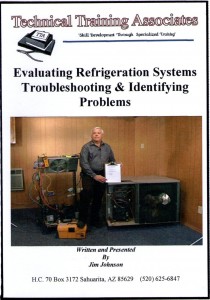Specifically, products such as germicidal ultraviolet (UV-C) lights, gas phase air purification, and photo catalytic oxidation (PCO) have given contractors a “one-two-three punch” to help customers battle allergens, pathogens, odors, and other pollutants commonly found inside residential and commercial buildings.
Apart from energy efficiency, IAQ is undoubtedly the fastest rising concern of home and building owners. An estimated 20 million Americans, or one in every 15, suffer from asthma, according to the Asthma and Allergy Foundation of America (AAFA), Landover, Md.
Based on those statistics, an HVAC contractor with 1,500 service accounts, for example, should have at least 100 customers that would gladly listen to a sales presentation on how the three aforementioned technologies can help reduce the causes of many IAQ issues. UV lights, for example, are a proven technology for controlling airborne microbial growth from occurring on the interior surfaces of HVAC systems. They also reduce the spread of those microbes throughout the occupied space via the ventilation system.
The effect that UV lights and other technologies, let alone all three technologies, can have on the indoor environment is significant:
• The AAFA reports that 40 to 50 million Americans suffer from allergic diseases.
• According to a study in The Lancet, a medical journal that comments on current developments in the medical field for its physician readership, UV lights reduced microbial contamination within the HVAC system by greater than 99 percent. The same study also revealed a reduction of occupant respiratory illnesses by more than 40 percent.
• The U.S. Environmental Protection Agency (EPA) reports the air inside a home is a minimum five times worse than outside air. Consequently, the EPA links poor IAQ to respiratory and other health-related issues such as Sick Home Syndrome.
HVAC contractors have the customer base, products, and tools available to help reduce these adverse conditions, yet many aren’t aware of the benefits of UV light disinfection as a means of improving IAQ. Additionally, even fewer contractors and their customers are aware of gas phase air purification and PCO benefits.
Fortunately, some HVAC industry manufacturers are making it easier for contractors to provide these types of IAQ products by combining all three methodologies into one unit that can be readily installed in new or retrofit applications. For example, the APCO® (advanced photo catalytic oxidation) system manufactured by Fresh-Aire UV®, combines a UV light with activated carbon cells and PCO to provide odor, volatile organic compound (VOC), and microbial control. A variety of other manufacturers have variations of one or more of these technologies.
UV Light Disinfection
UV light technology is probably the most widely known of the three aforementioned IAQ approaches. It has been used for more than a century as a germicidal solution for a variety of applications from disinfecting water to controlling airborne diseases in hospitals.
For HVAC applications, UV lights are often strategically placed downstream facing the coils in air conditioning systems. They’re used in everything from large commercial air handlers to small condominium fan coil units, ductless systems and mini-split evaporator coils. They disinfect the HVAC equipment interior surfaces of microorganisms that adhere to blower assemblies, coils, and other areas as well as help reduce airborne microorganisms. The UV disinfection process consists of breaking apart the molecular bonds of DNA by penetrating the membrane and nucleus of microorganisms, thus inhibiting their ability to reproduce. Although effectiveness depends on exposure time and microorganism type, all viruses, bacteria, mold, and other microbes can’t survive in the presence of UV light.
Besides IAQ benefits, UV lights also reduce system maintenance and help increase HVAC system energy efficiency. Energy savings are increased because the coils are kept clean of biological growth, thus improving static pressure across the coil, reducing the load on the blower, and improving heat transfer. For example, a thin growth of bio-film on coil surfaces can reduce the free area and increase air velocity up to 9 percent. Cleaner coils also deliver an impressive 30 percent increase in cooling capacity when compared to dirty coils.
Gas Phase Air Purification
While UV lights are effective in controlling microbial growth, they aren’t as effective against many odors. It’s true that mold, mildew, and other microbial odors will be indirectly removed because UV lights prevented their growth. However there’s a host of other household odors that UV lights don’t affect. Specifically, VOCs, such as cleaning agents, adhesives, deodorizers, paints, and formaldehydes, which are found in carpeting, furniture fabrics, and other home furnishings. The off-gassing of these chemicals can affect respiratory functions of household and building occupants, especially children and the elderly. In commercial buildings, which must comply with the outdoor air requirements of the American Society of Heating, Refrigerating and Air-Conditioning Engineers (ASHRAE) Standard 62, Ventilation for Acceptable Indoor Air Quality, outdoor contaminants such as ground-level ozone, nitrogen oxides, sulfur oxides, and carbon monoxide can affect both the occupants as well as building processes.
Conventional HVAC air filters aren’t helpful either, because they only trap particles. Gases can also flow through high efficiency particulate arrestor (HEPA) filters and ultra low particulate arrestor (ULPA) filters that trap only .3-micron-diameter particulates and .1-micron-diameter particulates, respectively. The energy-conserving construction techniques of tighter buildings has made VOCs a more critical factor than ever before.
Gas phase air purification, which often uses activated carbon to adsorb gaseous contaminants, has been proven effective. It’s a technology that has been used for decades in heavy industries such as petrochemical, waste water processing, and paper/pulp to minimize gaseous contaminants that effect equipment, employees, and the surrounding environments.
More recently, in accordance with ASHRAE Standard 62, engineers have specified gas phase air purification as stand-alone units or incorporated it into outdoor makeup air systems for commercial buildings. Many metropolitan airports, for example, use it to purify terminal outdoor air laden with vehicle and aircraft emissions, for the benefit of air travelers.
The activated carbon processing results in a filter media with a high degree of microporosity that air is drawn through inside the HVAC air handler. The carbon, which is derived from the environmentally-friendly source of coconut shells or other wood types, adsorbs gaseous contaminants and retains it from the airstream.
Likewise odors from pets, cooking, fresh paint, and other off-gassing sources are removed from the environment.
Photo Catalytic Oxidation
The limitation of gas phase air purification is that the media eventually loses its adsorbing capacity and must be replaced periodically, which raises operational costs. Commercial enterprises such as clean rooms, airport terminals, and large office buildings near a local landfill must have air purification at any cost, but the average homeowner won’t pay for IAQ if it’s cost-prohibitive.
This is where the third method, PCO, enters the IAQ picture. Although it varies by manufacturer, the previously mentioned APCO methodology uses carbon cells infused with titanium dioxide. The cells adsorb VOCs, but before they reach their adsorption capacity, the same UV light disinfecting the airborne microbes and interior HVAC surfaces, also assists in regenerating the carbon media. Thus the carbon media is continually reused and never needs replacement.
When illuminated by UV light, the titanium dioxide produces hydroxyl radicals, which react with and decompose organic matter to form non-toxic inorganic matter. Specifically, PCO breaks down toxic gaseous contaminants into common water molecules and carbon dioxide. Hydroxyl radicals are among the strongest oxidizing species and have stronger disinfecting capabilities than chlorine, ozone, and even hydrogen peroxide, but are much safer for building occupants.
Unlike many other air purification and adsorption methods, PCO destroys contaminants versus just transferring them to an adsorption substrate. Additionally, this process is performed at ambient temperatures and pressures.
What Contractors Can Do
Since applying any combination of these IAQ technologies for total home or building coverage is more effective than free-standing, single-room portable units, HVAC contractors should be the source for total IAQ solutions.
The key to success is education, first on the contractor’s behalf, then for the service customers that are unaware of the recent air purification technology advancements now available to them. Sales opportunities can be abundant for those contractors that feature a full IAQ service program offering equipment installation and indoor environment improvements. However, beyond profit margins is the fulfillment of improving the health and comfort for customers that may suffer from indoor environment allergens and pollutants.
Publication date: 05/21/2012










